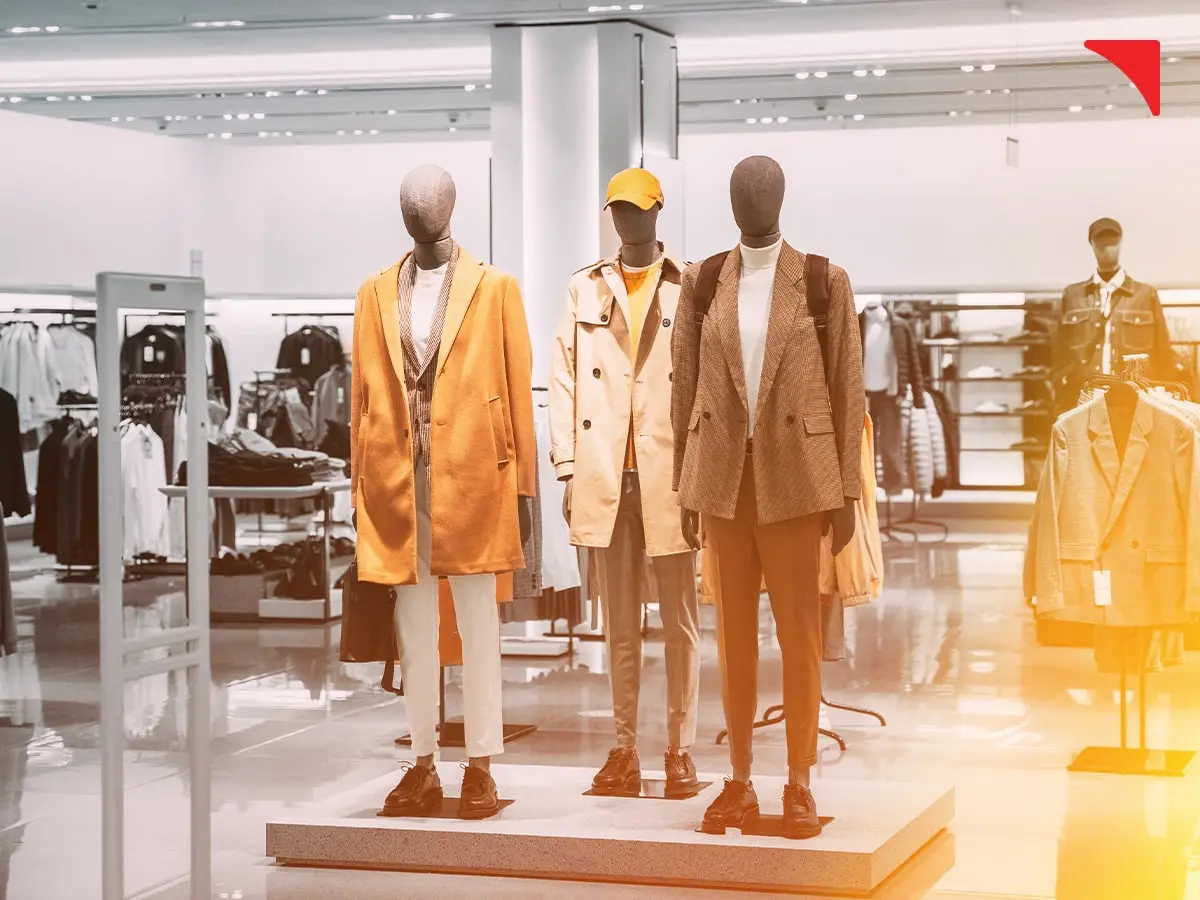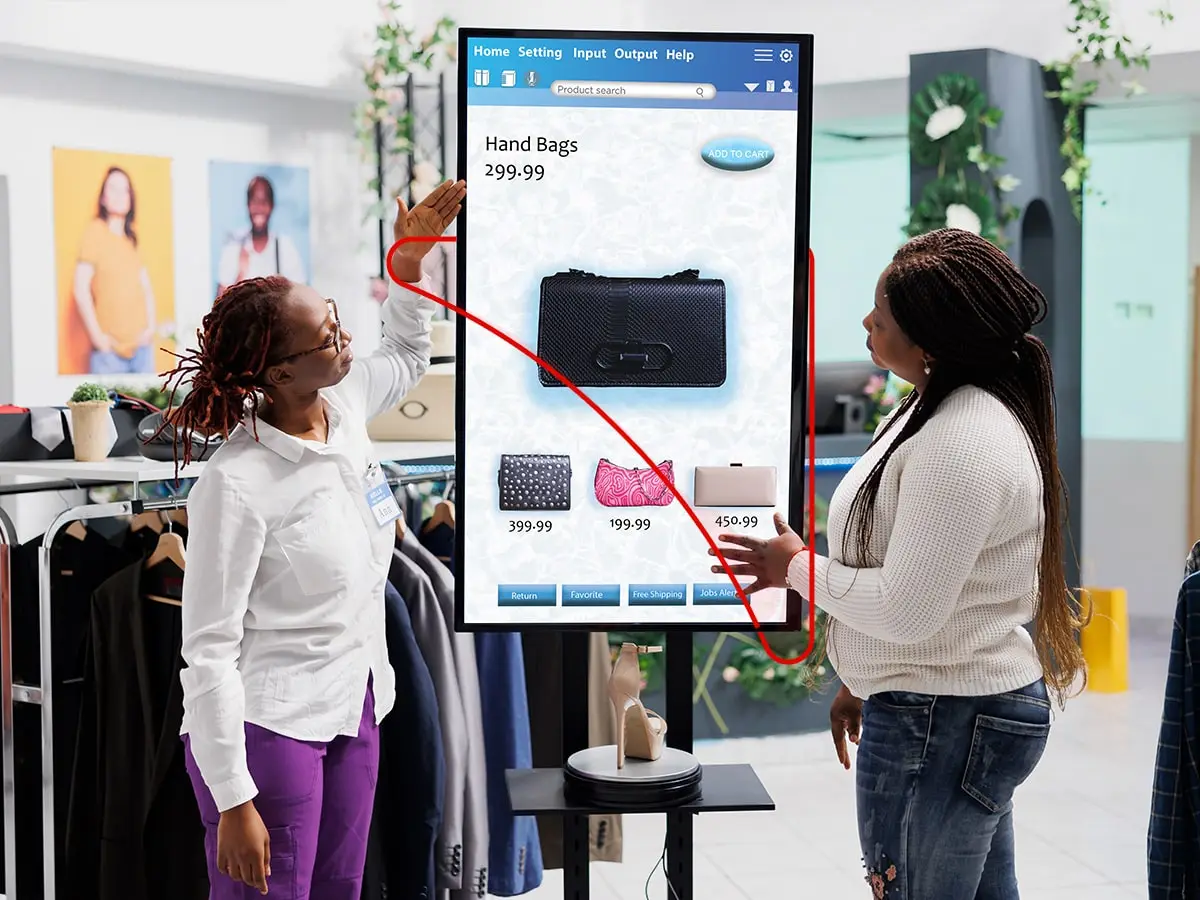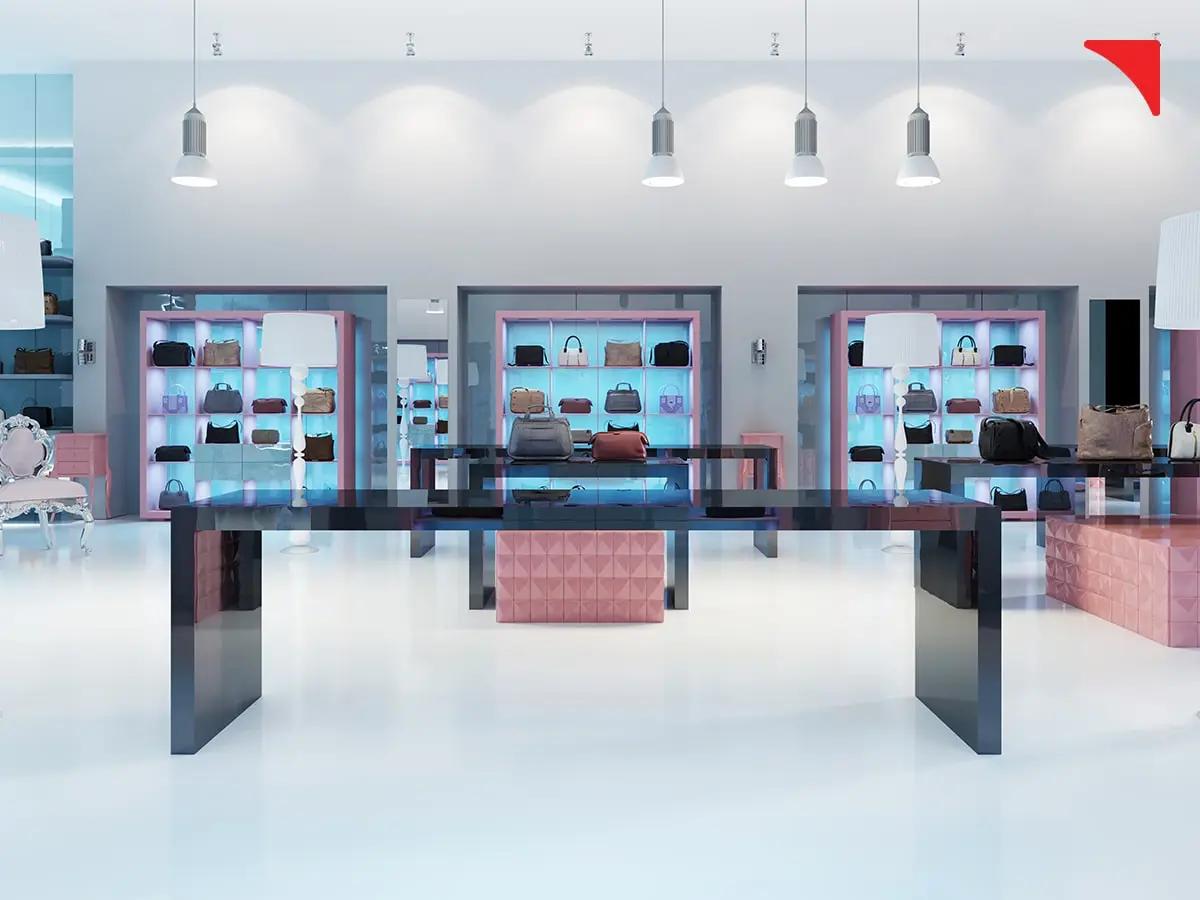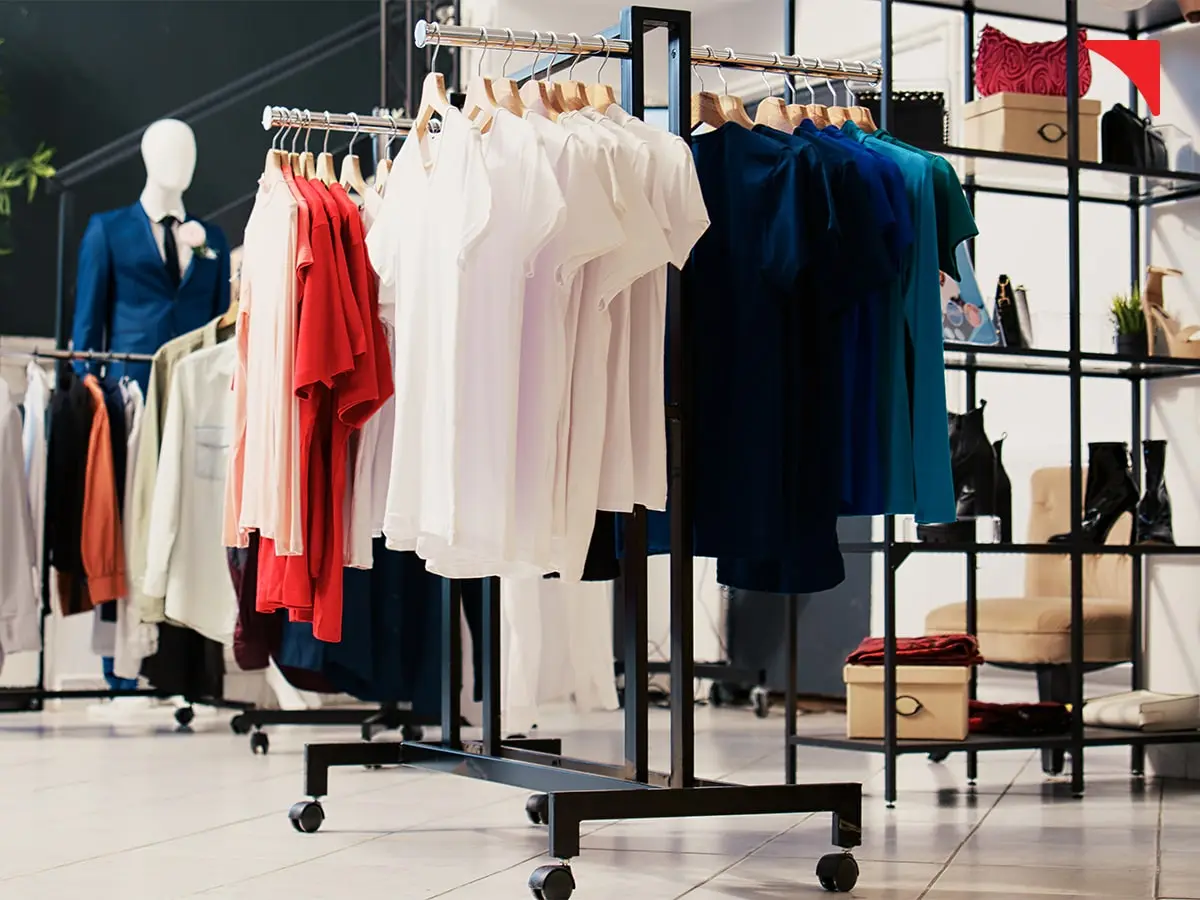HOW VISUAL MERCHANDISING SHAPES BRAND PERCEPTION AND DRIVES SALES

In today's hyper competitive retail era, brands are competing to seek customers' attention. In this scenario, visual merchandising emerges as a strategic powerhouse that extends far beyond product aesthetics. Instead, it is a very wide concept that aims at creating immersive customer experiences by perfectly blending various aspects, including behavioral research, data analytics, and creative store design. Visual merchandising, when done in a correct manner, does more than just increase sales. Instead, it completely changes customers' perception of the brand, also affecting the way they interact and engage with it.
Why is exactly visual merchandising important?

As already stated, visual merchandising is not just an operation task. Instead, it is one of the most crucial brand building exercises. According to our research, we found that:
- More than 68% of purchasing decisions are made in-store, further emphasizing the role of visual colors in influencing customer behavior.
- Around 52% of shoppers claim that they love revisiting a store that provides them with compelling and engaging visual experiences.
- Nearly 73% of customers judge a brand's quality based on its physical retail space.
Well, these statistics are a clear indication that the aesthetic appeal and overall functionality of a store directly impact how a brand is perceived, for how long the customers will engage with it, and how much they will probably spend.
Discovering how visual merchandising affects brand perceptions!
1.) It creates a multi sensory brand experience

We all are aware of the fact that modern visual merchandising is no longer just concerned about sight. Instead, it taps into all five senses of human beings to further create a holistic brand perception.
According to a study by Mood Media, it was found that sensory marketing has the power to increase client dwell time by 6% and sales by 10% to 15%.
Well, all these points clearly justify why brands are including sensory marketing tactics as a part of their retail strategy. By integrating sensory elements, they can seamlessly evoke emotions that align with their brand identity.
Hermès, a French luxury fashion house, uses soft lighting, chosen music, and fine materials in its store designs. The aroma of leather and the tactile feel of their displays transport customers to the brand's ideal of artistry and luxury, further providing them with an unforgettable and immersive retail experience.
2.) Visual merchandising allows the application of data driven personalization

Shifts in customer demand and changes in preferences have always been the main reasons that led to an evolution in the retail field. Since every different customer has different needs and demands, visual merchandising is no longer a one size fits all solution. Instead, retail brands have already started using customer data like demographics, purchasing patterns, and history, local preferences, etc., in order to design relevant as well as personalized displays.
It is not a very commonly used retail concept, but various brands have now started utilizing heat map analysis. It is a tool that they use to monitor customer movement around their businesses to further determine high as well as low traffic areas. This information helps them make required changes and implement strategic product placement.
Apart from the heatmaps, brands can also consider using AI powered insights. They can feed the acquired data and get a prediction on which displays are likely to generate the highest conversion rates.
3.) It emphasizes the psychology of space and layout design

According to a survey conducted by McKinsey, it was found that more than 42% of customers relate a store's layout and design with brand excellence.
Store layout design significantly impacts and shapes the customer's perception of the values and overall personality of a brand. Irrespective of whether they are labyrinthine designs that encourage exploration (like IKEA) or open, minimalist layouts that portray sophistication, spatial arrangements do transmit brand traits.
Nike's House of Innovation stores offer interactive zones for customers to create shoes and test products. This combination of innovation and customization reinforces Nike's image as forward thinking and customer centric as well.
4.) Visual merchandising promotes emotional branding using thematic displays

According to a study by Motista, it was discovered that motionally engaged clients have a 306% higher lifetime value and are 50% more likely to suggest the brand.
Thematic displays tell a brand story, further drawing an emotional response from customers. These displays are especially effective during seasonal campaigns or special events where the topic matches customers' emotions and expectations.
Anthropologie, an American retail brand that deals in women's clothing, accessories, home décor, furniture, gifts, and more, implemented seasonal window displays that combine art and business, inspiring nostalgia and aspirational lifestyles. These controlled spaces promote exploration while reinforcing the brand's image as a creative, bohemian sanctuary.
5.) Technology integrated visual merchandising

Digital innovation has transformed visual merchandising. Augmented reality (AR), virtual reality (VR), and interactive screens improve the whole customer experience while supporting modern and innovative brand perceptions.
Topshop, a British fashion company, created augmented reality fitting rooms, allowing shoppers to try on clothing without changing. This not only improved convenience but also reflected their youthful, tech savvy brand image.
6.) Visual merchandising helps establish trust through consistency and cleanliness

A well kept store demonstrates a brand's attention to detail and dedication to excellence. In contrast, cluttered or badly maintained displays can erode customer trust and harm brand reputation.
In order to ensure that displays are spotless, retail brands should conduct regular audits. In addition, they can also work towards reducing consumer irritation by ensuring that all products on display are in stock.
Sephora, a cosmetics business, prioritizes client happiness and hygiene by keeping displays clean and well organized, including testers.
7.) Visually appealing displays and other retail elements increase the chance of impulse purchases and upselling

Strategic product placement is crucial for visual merchandising, as impulse buys make up 40% of all purchases.
Displays strategically positioned near checkouts or in high traffic areas encourage impulse purchases and upselling. Retailers can urge customers to make larger purchases by grouping related products together.
Whole Foods, an American multinational supermarket chain, uses premium lighting and curated displays at checkouts to highlight seasonal and high margin products, increasing last minute sales.
8.) Visual Merchandising for the Omnichannel Era

With the arrival of e commerce, visual merchandising must move beyond physical storefronts and onto digital channels. Maintaining consistency across in store, online, and social media encounters is critical for maintaining brand perception. To accomplish this, brands can implement various strategies, including the following one.
- Use consistent images and themes for both online and in-store promotions.
- Augmented reality can be used to create virtual try ons that replicate the physical in-store experience online.
- Use QR codes in displays to guide clients to online exclusives.
Burberry, a British luxury brand, integrates digital displays with QR codes in its physical stores to provide customers with an opportunity to explore additional product details and seamlessly make online purchases. Doing this helps the brand provide immersive experiences to customers that perfectly align with its reputation for innovation and quality.
Measuring the impact of visual merchandising on brand perception!
Macy's, an American holding company of departmental stores, overhauled its visual merchandising strategy with interactive displays and thematic storytelling. This resulted in a 15% increase in customer stay time and a 20% increase in social media engagement. Retail brands that wish to track the impact of their visual merchandising strategies can consider the following metrics.
- Dwell Time: Use footfall analytics to measure how long customers spend near displays.
- Sales Uplift: Compare sales data before and after implementing new displays.
- Customer Feedback: Collect insights on the perceived appeal and functionality of displays.
- Social Media Engagement: Track mentions, shares, and photos of in-store displays posted by customers.
In today's retail market, where every detail counts, visual merchandising serves as a silent advocate for your business, saying volumes about its values, quality, and vision. Investing in this crucial discipline is more than just improving looks; it is also about creating meaningful connections that last long after clients leave the store.